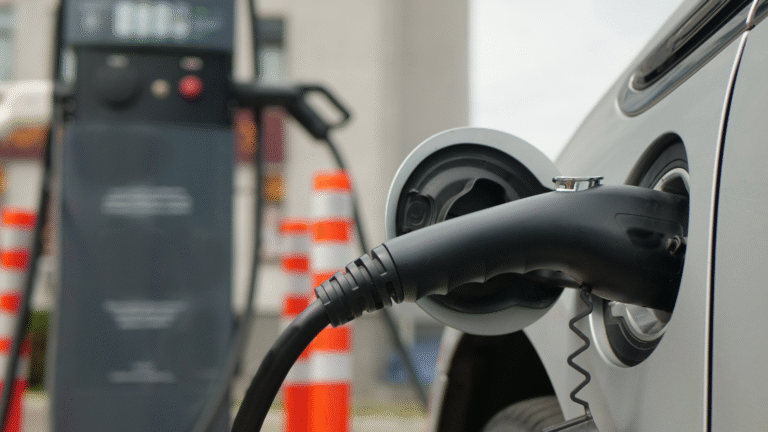If you need flexibility for weekend gear, surfboards, grocery hauls or family luggage, storage practicality is king. Electric SUVs come in many shapes but not all translate into useful cargo capacity. This guide looks at which EV SUVs deliver the smartest, most usable storage for Australian lifestyles—covering boot dimensions, clever storage spaces, roof and tow practicality and cargo-focused features.
Table of Contents
- What “practical storage” means in an EV SUV
- Boot geometry vs advertised litres — what to measure
- Clever storage features that matter (underfloor, tie-downs, organisers)
- Top electric SUVs with standout storage practicality (by use-case)
- Roof, tow and accessory considerations for gear-hauling
- Practical tips for keeping cargo organised and safe
- FAQs
1. What “practical storage” means in an EV SUV
Practical storage isn’t just litres on a brochure. It’s:
- A low, accessible load lip for heavy items.
- A wide, square boot that fits suitcases and prams efficiently.
- Underfloor storage and washable liners for wet or sandy gear.
- Tie-downs, hooks and 12V points to secure coolers and fridges.
- Easy folding seats and minimal obstructions when reconfiguring for cargo.
Design choices that make packing and cleaning simple are what family and outdoor buyers appreciate most.
2. Boot geometry vs advertised litres — what to measure
- Aperture width & height: Will your pram or a couple of large suitcases fit standing or flat?
- Load lip height: The lower the better for heavy items; measure from the ground to the top of the lip.
- Usable floor area: Watch for intrusions from wheel arches and battery housings.
- Fold-flat capability: Check whether the second row folds truly flat and whether it creates a step at the hinge.
A quick pack test with your typical items beats promised litre numbers every time.
3. Clever storage features that matter (underfloor, tie-downs, organisers)
- Underfloor lockers: Great for hiding wet shoes or dirty straps; look for drain plugs and washable surfaces.
- Integrated tie-down rails and D-rings: Secure heavy loads and roof box anchoring points.
- Power sockets in the boot: 12V or 230V outlets make fridges and pumps plug-and-go.
- Fold-flat seat latches from the boot: Allows quick reconfiguration without climbing back to the cabin.
- Removable load covers and easy-clean liners: Save time removing sand and mud.
These features change how easy the SUV is to use for outdoor life.
4. Top electric SUVs with standout storage practicality (by use-case)
(Archetypes and what to expect.)
- The surf-and-beach SUV: Low load lip, long roof rails, washable boot, and underfloor storage for wetsuits.
- The camping/overlander SUV: Integrated tow-capability (or tow-ready), 12V boot power and modular storage rails.
- The family-hauler SUV: Wide boot with flat fold, ISOFIX access and cargo organisers for prams and sports gear.
- The trades/freelancer SUV: Utility-focused interiors with reinforced tie-downs and optional bulkheads or hard floor inserts.
Test with your gear—surfboard, bikes, pram or dog crate—to find the model that fits your life, not just the spec sheet.
5. Roof, tow and accessory considerations for gear-hauling
- Roof rails vs fixed rails: Low-drag, rated rails are best for boards and boxes—remove racks when unused.
- Tow ratings: Confirm manufacturer tow capacity and whether towing voids ranges or warranty. Expect significant range hits when towing.
- Aftermarket racks & mounts: Choose systems rated for EV roof loads and aerodynamics; look for easy on-off fittings.
- Boot-mounted load-securing kits: Velcro straps, cargo nets and heavy-duty tie-downs keep items from bouncing and damaging interiors.
Accessories are useful, but they also add drag and reduce EV range—factor that into planning.
6. Practical tips for keeping cargo organised and safe
- Keep a set of washable liners and heavy-duty cargo bags to contain dirt.
- Use stackable crates that slot into the boot to prevent shifting.
- Store fragile items above the boot floor and secure with tie-downs.
- Remove roof racks on long highway trips when not needed to save energy.
- Use boot power for fridges or pumps rather than running in-cabin devices.
A little organisation extends the life of interior trim and improves usability.
FAQs
Q: Do EV batteries reduce boot space?
A: In many modern EV SUVs battery packaging is underfloor, preserving boot volume; some designs still intrude—check the floor and underfloor storage.
Q: How much range do I lose with a roof rack?
A: Roof racks can reduce range by roughly 5–15% depending on speed and load—remove them when not needed.
Q: Can SUVs tow trailers safely with EVs?
A: Many can, but towing dramatically reduces range and increases thermal stress—follow manufacturer tow ratings and cooling guidance.
Conclusion
Practical storage is about usable geometry and clever features—not just headline litres. For Australian outdoor and family lifestyles, prioritise low lip heights, washable underfloor storage, tie-downs and boot power. Test-pack real gear and choose roof/tow options knowing the trade-offs on range. The right electric SUV makes hauling everyday life effortless and keeps adventures simple.
Meta description: The best electric SUVs for practical Australian storage—low load lips, underfloor lockers, tie-downs and family-friendly boots. Pack smart and pick an SUV that fits your gear.
